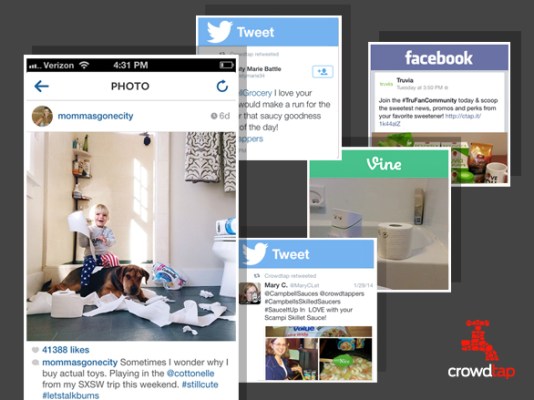Crowdtap, a startup that connects brands with consumers to spur the creation of promotional social media content, is announcing that it has raised $5 million in Series B funding.
The company announced its $7 million Series A back in 2011. When startups raise less money in subsequent funding rounds, it’s often interpreted as a sign that they couldn’t get more. But in this case, co-founder and CEO Brandon Evans said Crowdtap didn’t need to raise a bigger round, because it became profitable at the end of 2013, more than tripling its monthly recurring revenue over the course of the year.
The company says it now has a headcount of 55, and that brands using Crowdtap include Verizon, P&G, Nestle, Kraft, Clorox, AT&T and Sony.
Evans described the company as creating the “standard plumbing” for brands to connect with consumers — it can help them locate influential fans, then inspire those fans to post on Facebook, Twitter, blogs, and elsewhere by introducing new content, promotions and products. To accomplish that, the startup has built its own consumer community — Evans said that’s key for keeping users more consistently engaged than they would be on a site devoted to a single brand. (You can see some sample promotional content in the image above.)
He added that even though there’s been an explosion of social listening and social marketing products, “Inspiring consumers to create quality content … is still relatively new.”
The Series B was led by Foundry Group with participation from Tribeca Venture Partners, Alta Communications, and The Mustang Group. Evans said that raising a smaller round from existing investors allows Crowdtap to “continue building on our trajectory without overly diluting the company.”
The company also released a study earlier this month in partnership with Ipsos Media CT and the Social Media Advertising Consortium. The study looked at media consumption among 18-to-36 year olds and found that user-generated content accounted for 30 percent of respondents’ consumption time.
